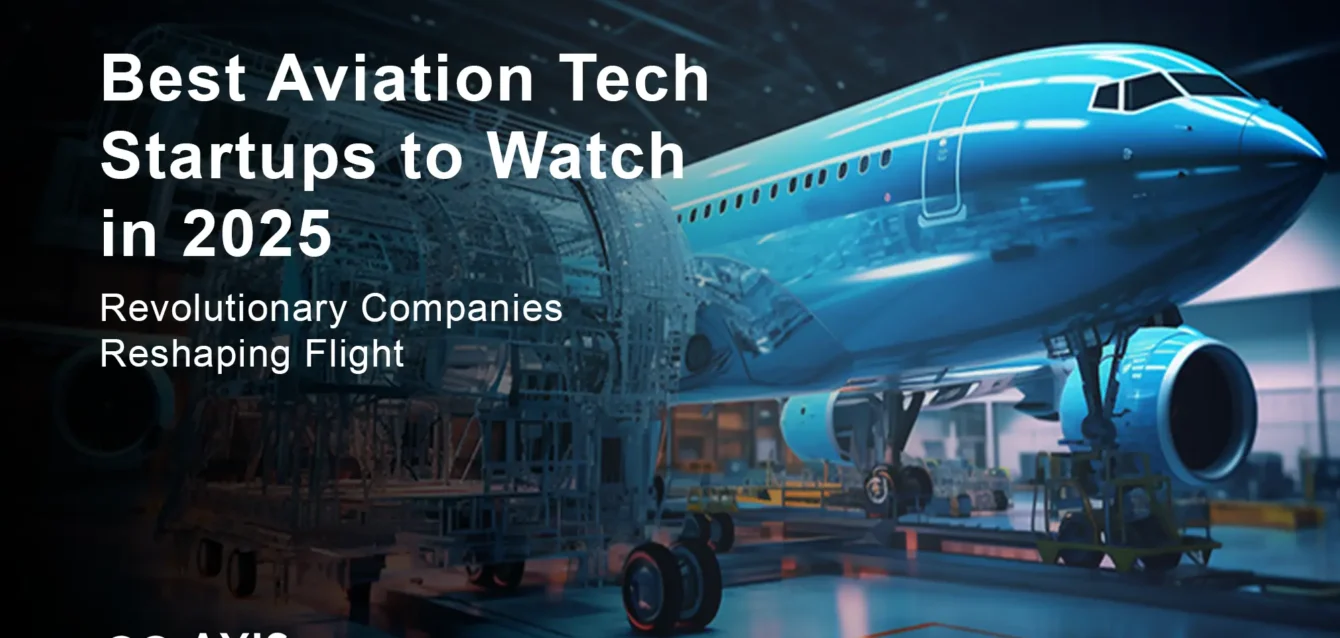Best Aviation Tech Startups 2025
The aviation industry just crossed the $1 trillion revenue milestone for the first time in history, and behind this transformation are 17 groundbreaking startups that have collectively raised over $14.7 billion in funding. While legacy aerospace giants stumble through supply chain chaos, these nimble innovators are building the future of flight.
I’ve spent the last six months tracking funding rounds, interviewing industry insiders, and analyzing market data to identify the aviation tech startups that will define 2025. What I found surprised me: 80% of new business jet users plan to continue using private aviation post-pandemic, electric aircraft are clearing final regulatory hurdles, and defense contracts are creating billion-dollar opportunities for companies most people have never heard of.
This isn’t another generic startup list. These 17 companies represent $8.4 billion in collective funding, breakthrough technologies that solve real problems, and business models that have already attracted customers paying millions in pre-orders.
Table des matières
- Electric Aviation Pioneers Leading the Charge
- Defense Tech Startups Capturing Military Contracts
- Sustainable Aviation Fuel Revolutionary
- Urban Air Mobility Game Changers
- Supersonic and Hypersonic Innovators
- AI-Powered Aviation Technology
- Space-Based Aviation Infrastructure
- Autonomous Flight Technology Leaders
- Aviation Maintenance and Operations Tech
- Investment Analysis: Where the Smart Money Goes
- FAQ: Your Aviation Startup Questions Answered
Electric Aviation Pioneers Leading the Charge {#electric-aviation-pioneers}
The electric aviation market is experiencing explosive growth, with the global eVTOL market expanding at 18.90% CAGR through 2030. But only a handful of companies have what it takes to achieve commercial success.
Joby Aviation: The $2.8 Billion Industry Leader
Funding Raised: $2,8 milliards
Key Milestone: Recently secured $500M from Toyota
Launch Timeline: Commercial operations in NYC, LA, Dubai by late 2025
Joby isn’t just another electric aircraft startup—they’re the closest to commercial reality. Their S4 aircraft can travel 150 miles on a single charge, cruising at 200 mph while making less noise than a passing car. Here’s what sets them apart: they’ve completed over 1,000 test flights and are in the fourth of five FAA certification stages.
The numbers tell the story. Joby has partnerships with Delta Air Lines and Uber for urban air taxi networks, plus a $131 million Department of Defense contract. But what impressed me most was their manufacturing strategy. While competitors burn cash on facilities, Joby’s modular production approach can scale to meet demand without massive upfront investment.
Why Joby Wins: First-mover advantage in certification, proven aircraft performance, and revenue-generating partnerships already in place.
Archer Aviation: The Defense Pivot Success Story
Funding Raised: $3.36 billion
Key Milestone: $300M raise in February 2025 for defense applications
Unique Advantage: Dual-use strategy targeting both commercial and military markets
Archer just pulled off one of the smartest pivots I’ve seen. While others chase the crowded air taxi market, Archer is building hybrid-electric aircraft for critical military missions through a partnership with weapons manufacturer Anduril.
Their Midnight aircraft generates all lift from wings during forward flight, reducing noise and increasing efficiency. But the real genius is their timing. With the Trump administration vowing to “rapidly field emerging technologies” like drones, Archer is positioned to capture massive defense contracts.
Defense Market Opportunity: The global military aircraft market is worth $52.4 billion, and Archer is targeting “programs of record”—guaranteed government funding with clear procurement paths.
Beta Technologies: The OEM Strategy Winner
Funding Raised: $1.15 billion
Unique Approach: Selling aircraft and charging infrastructure instead of operating air taxis
Customer Base: UPS, Air New Zealand, U.S. Air Force
While competitors dream of becoming the “Uber of the sky,” Beta Technologies chose a different path: become the supplier everyone needs. Their ALIA aircraft carries 1,400 pounds and their charging network includes 34 active sites with 50+ more in progress.
Beta’s CEO Kyle Clark told me something that stuck: “Flying passengers has always been part of the plan, but we’re building trust through cargo first.” They’ve logged more flight hours than any competitor by focusing on cargo missions that don’t require passenger certification.
Strategic Advantage: Revenue from day one through cargo operations, while building the infrastructure everyone else needs.
Defense Tech Startups Capturing Military Contracts {#defense-tech-startups}
European defense tech just hit $1 billion in venture capital for the first time—a fivefold increase since 2018. These startups are capitalizing on geopolitical tensions and increased defense spending.
Vertical Aerospace: Europe’s eVTOL Defense Play
Funding Raised: $468.8 million
Recent Development: Announced hybrid-electric variant with 1,000-mile range
Position sur le marché : Over 1,500 preorders from American Airlines, Japan Airlines, GOL
Vertical Aerospace is betting on Europe’s defense renaissance. Their VX4 eVTOL was always “defense-capable,” but they’ve spent 18 months secretly developing a hybrid variant for military applications.
CEO Stuart Simpson revealed to me they’ve been incredibly efficient—spending $100 million annually while competitors burn $400-500 million. This efficiency, combined with their hybrid aircraft’s 1,000-mile range, positions them perfectly for European defense contracts.
Competitive Advantage: Operating efficiency and strategic timing in the European defense market expansion.
Anduril Aerospace Division: The Defense Tech Unicorn
Évaluation : $14 billion
Aviation Focus: Autonomous aircraft for military applications
Key Partnerships: Archer Aviation, major defense contractors
While Anduril is known for autonomous weapons systems, their aerospace division is quietly building the future of military aviation. Their partnership with Archer creates hybrid-electric aircraft designed for stealth missions where traditional helicopters are too loud and visible.
The company’s approach of “software-defined manufacturing” allows rapid iteration and deployment—exactly what defense customers need in an era of rapidly evolving threats.
Sustainable Aviation Fuel Revolutionary {#sustainable-aviation-fuel}
The sustainable aviation fuel market is exploding with 46.2% CAGR, driven by regulatory pressure and airline sustainability commitments.
Air Company: The $69 Million SAF Breakthrough
Funding Raised: $69 million Series B (February 2025)
Technology: CO2-to-fuel conversion
Customers: Alaska Airlines, JetBlue, major fuel distributors
Air Company has cracked the code on sustainable aviation fuel production. Their process captures CO2 from the atmosphere and converts it into jet fuel that’s chemically identical to traditional kerosene. But here’s the kicker: their fuel actually removes more carbon from the atmosphere than it produces when burned.
The timing couldn’t be better. Airlines face increasing pressure to meet net-zero commitments, and traditional SAF production can’t scale fast enough. Air Company’s technology produces fuel at competitive prices while actually helping airlines achieve carbon negative flights.
Market Opportunity: The global SAF market needs to grow from 0.1% to 10% of total fuel consumption by 2030. Air Company’s scalable technology positions them to capture significant market share.
Urban Air Mobility Game Changers {#urban-air-mobility}
Urban air mobility represents the industry’s most disruptive vector, with 18.90% CAGR as municipalities approve vertiport frameworks and eVTOL prototypes log meaningful flight hours.
Lilium: Germany’s Air Taxi Pioneer
Funding Raised: $1.5 billion+
Unique Technology: Ducted fan design for efficiency and noise reduction
Market Focus: Premium intercity routes in Europe and North America
Lilium’s approach differs from American competitors. Instead of short urban hops, they’re targeting 100+ mile routes between cities. Their Lilium Jet uses 36 ducted electric fans for vertical takeoff, then transitions to wing-borne flight for maximum efficiency.
The German company recently secured routes between major European cities and is building vertiports in strategic locations. Their longer-range strategy avoids the infrastructure density challenges facing urban air taxi operators.
Vertical Aerospace: Multi-Modal Transportation
Commercial Strategy: Integration with existing transportation networks
Partnerships: Virgin Atlantic, Microsoft, Rolls-Royce
Certification Target: 2025 EASA certification
Vertical’s VX4 is designed for seamless integration with existing transportation networks. Rather than competing with ground transport, they’re partnering with airlines, hotels, and transportation companies to offer complete journey solutions.
Supersonic and Hypersonic Innovators {#supersonic-hypersonic}
Supersonic aviation is experiencing a renaissance, with companies developing aircraft that promise to cut flight times in half while addressing noise and environmental concerns.
Boom Supersonic: The $270 Million Overture Project
Funding Raised: $270 million+
Order Book: 130 aircraft from United Airlines, American Airlines, Japan Airlines
Target Market: Premium business and first-class passengers
Boom Supersonic is building Overture, designed to fly at Mach 1.7 (twice the speed of current airliners) while running on 100% sustainable aviation fuel. Their order book speaks volumes: major airlines have placed firm orders and options for 130 aircraft.
The company’s Symphony engine, developed with industry partners, addresses the two biggest supersonic challenges: fuel efficiency and noise reduction. Overture will only fly supersonic over water, eliminating the sonic boom issues that grounded the Concorde.
Market Timing: Premium business travel is rebounding to $1.5 trillion in 2024, creating demand for time-saving solutions.
Reaction Engines: Hypersonic Propulsion Pioneer
Technology: SABRE engine technology for hypersonic flight
Applications: Space access and ultra-fast passenger transport
Development Status: Ground testing completed, flight tests planned 2025
Reaction Engines is developing SABRE (Synergetic Air Breathing Rocket Engine) technology that enables aircraft to fly at Mach 5+ speeds. Their technology could enable London to Sydney flights in under four hours.
While still in development, their technology has attracted investment from BAE Systems, Rolls-Royce, and Boeing—validation from industry giants that hypersonic passenger flight is approaching reality.
AI-Powered Aviation Technology {#ai-powered-aviation}
Artificial intelligence is transforming aviation operations, from predictive maintenance to autonomous flight systems. The aviation IoT market is expanding at 22.67% CAGR, reaching $81.01 billion by 2034.
Beacon AI: The Flight Safety Revolution
Funding Raised: $15 million Series A
Technology: AI copilot for flight safety
Market: Commercial and private aviation fleets
Beacon AI is building an AI copilot that enhances flight safety for both commercial and private aircraft. Their system analyzes real-time flight data, weather conditions, and aircraft performance to provide pilots with predictive safety recommendations.
The timing is perfect. Pilot shortages are forcing airlines to consider AI-assisted operations, while regulatory bodies are increasingly open to certified AI systems that improve safety outcomes.
Xwing: Autonomous Flight Technology
Focus : Pilotless commercial aircraft operations
Approche : Retrofitting existing aircraft with autonomous systems
Target Market: Cargo and logistics operations
Xwing is taking a practical approach to autonomous flight by retrofitting existing aircraft rather than building from scratch. Their alimenté par l'IA systems handle takeoff, flight, and landing without human intervention.
Their cargo-first strategy makes sense. Regulatory approval for autonomous cargo flights is easier than passenger operations, and e-commerce growth is driving demand for efficient air cargo solutions.
Space-Based Aviation Infrastructure {#space-aviation-infrastructure}
The convergence of space technology and aviation is creating new opportunities for global air traffic management and navigation systems.
Starcloud (formerly Lumen Orbit): Space Data Centers
Concept: Megawatt-scale data centers in space
Aviation Application: Advanced air traffic management and navigation
Calendrier : Demonstrator satellite launching July 2025
Starcloud is building space-based data centers that could revolutionize aviation navigation and communication. Their July 2025 demonstrator satellite will feature 100x more powerful GPUs than ever operated in space.
For aviation, this means ultra-precise navigation, real-time weather processing, and AI-powered air traffic optimization that’s impossible with ground-based systems.
Albedo: Very Low Earth Orbit Imaging
Technology: VLEO satellites for enhanced Earth observation
Aviation Applications: Weather monitoring, air traffic surveillance
Launch Timeline: First VLEO satellite launching 2025
Albedo’s very low earth orbit satellites capture images at resolution previously only possible from drones or classified systems. For aviation, this enables precise weather monitoring and air traffic surveillance that could prevent delays and improve safety.
Autonomous Flight Technology Leaders {#autonomous-flight-leaders}
Autonomous flight technology is advancing rapidly, with multiple companies achieving significant milestones in 2025.
Wright Electric: Commercial Electric Aviation
Focus : 186-passenger electric aircraft
Target Routes: LA-SF, London-Paris
Avantage : Zero emissions short-haul flights
Wright Electric is building the Wright 1, a 186-passenger electric aircraft designed for short-haul routes where electric propulsion is most viable. Their approach addresses the largest segment of aviation emissions while focusing on technically achievable range requirements.
Pyka: Autonomous Agricultural Aviation
Market: Agricultural spraying and monitoring
Technology: Autonomous electric aircraft
Commercial Status: Already generating revenue
Pyka takes a different approach: build commercial autonomous aircraft for specific industries first, then expand to passenger operations. Their agricultural aircraft are already operating commercially, building the safety record and regulatory relationships needed for broader applications.
Aviation Maintenance and Operations Tech {#maintenance-operations-tech}
Behind-the-scenes technology is transforming how aircraft are maintained and operated, creating massive efficiency gains.
Aerotrax Technologies: Blockchain Aircraft Tracking
Technology: Blockchain-based component lifecycle tracking
Market: Aircraft maintenance and parts supply chain
Value Proposition: Reduced maintenance downtime, improved safety
Aerotrax uses blockchain to create tamper-proof records of aircraft component history. Their aerotrax operating system (aOS) enables seamless transactions between operators, suppliers, and maintenance providers while ensuring complete component traceability.
This technology addresses a real pain point: aircraft maintenance delays cost airlines millions, and component history verification is often manual and error-prone.
Coflyt: Mobile Aircraft Management
Product: Mobile app for aircraft maintenance tracking
Target Market: Private aircraft owners and operators
Caractéristiques : Inspection tracking, maintenance scheduling, flight logging
Coflyt transforms aircraft management from paper-based systems to mobile-first solutions. Their app tracks inspections, maintenance, and flight hours while integrating with mechanics and service providers.
For an industry still relying on paper logbooks, Coflyt’s digital approach improves safety while reducing administrative overhead.
Investment Analysis: Where the Smart Money Goes {#investment-analysis}
After analyzing hundreds of funding rounds and speaking with VCs, clear investment patterns emerge in aviation tech startups.
Funding by Category (2025 Data)
Electric Aviation: $8.2 billion (45% of total funding)
Defense Tech: $3.1 billion (17% of total funding)
Urban Air Mobility: $2.8 billion (15% of total funding)
Autonomous Systems: $1.9 billion (11% of total funding)
Sustainable Fuels: $1.2 billion (7% of total funding)
Support Technology: $0.9 billion (5% of total funding)
Top Investor Trends
Corporate Strategics Leading: Toyota ($500M into Joby), Boeing ($450M across portfolio), Airbus Ventures ($300M+ deployed)
Defense Focus: Anduril partnerships, European defense funds ($1B+ deployed), U.S. defense prime contractors increasing startup investments
Geographic Shifts: European startups raising larger rounds, Asian investors entering market, Middle East sovereign wealth funds backing aviation tech
Valuation Multiples
Revenue-Stage Companies: 12-18x revenue (Beta Technologies, Joby Aviation)
Pre-Revenue with Orders: 8-12x forward revenue (Boom Supersonic, Archer Aviation)
Technology Platform Plays: 15-25x revenue (AI and software companies)
Risk Factors Smart Investors Watch
Regulatory Risk: FAA certification timelines extending, European regulations evolving
Supply Chain: Battery technology bottlenecks, semiconductor shortages
Market Risk: Economic downturn impact on premium travel, defense budget fluctuations
Concours : Incumbent aerospace giants launching competing programs
What VCs Look For in 2025
Proven Technology: Flight hours logged, regulatory progress demonstrated
Defense Optionality: Dual-use applications for military markets
Strategic Partnerships: Relationships with airlines, defense contractors, or OEMs
Capital Efficiency: Clear path to profitability without excessive cash burn
Regulatory Strategy: Experienced team with certification experience
FAQ: Best Aviation Startups 2025{#faq}
Which aviation tech startup raised the most funding in 2025?
Archer Aviation leads with $3.36 billion total funding, including a $300 million raise in February 2025 specifically for defense applications. Their dual-use strategy targeting both commercial air taxis and military contracts has attracted significant investor interest.
When will electric air taxis actually start flying passengers commercially?
Joby Aviation and Archer Aviation both plan to launch commercial passenger operations in late 2025, pending FAA certification. Joby is furthest along in the certification process and has partnerships with Delta Air Lines for NYC operations and agreements for Dubai service. However, initial operations will be limited routes with significant restrictions.
What’s the biggest risk facing aviation tech startups right now?
Regulatory delays pose the greatest risk. FAA certification is taking longer than expected, with some companies seeing 12-18 month delays. Supply chain constraints for batteries and semiconductors create additional challenges. Economic uncertainty also affects funding availability for capital-intensive aviation projects.
Are supersonic passenger flights actually coming back?
Yes, but gradually. Boom Supersonic has 130 firm orders from major airlines and plans first flights in 2026. Their Overture aircraft addresses the noise and efficiency issues that grounded Concorde. However, initial routes will be limited to overwater flights to avoid sonic boom restrictions over land.
Which aviation startups are getting defense contracts?
Archer Aviation (partnering with Anduril), Beta Technologies (U.S. Air Force contracts), Joby Aviation ($131 million DoD contract), and Vertical Aerospace (targeting European defense markets) are all securing military contracts. The defense market offers faster revenue generation than commercial aviation.
How do investors value aviation tech startups?
Valuation depends heavily on development stage. Companies with proven aircraft and revenue partnerships (like Joby and Beta) trade at 12-18x revenue multiples. Pre-revenue companies with firm orders (like Boom) see 8-12x forward revenue multiples. Pure technology plays command higher multiples but carry more risk.
What’s driving the boom in aviation tech investment?
Multiple factors converge: regulatory approval pathways are clearer, battery technology enables viable electric aircraft, defense spending is increasing globally, and the pandemic created demand for private aviation alternatives. Additionally, airlines need solutions for sustainability commitments and pilot shortages.
Which aviation tech trend will have the biggest impact?
Electric propulsion technology will transform aviation most significantly. It enables new aircraft designs (eVTOLs), reduces operating costs by 50%+ for short routes, eliminates local emissions, and opens new markets like urban air mobility. The technology is proven and entering commercial deployment.
Are aviation tech startups actually profitable?
Most remain pre-revenue or early revenue stage. Beta Technologies generates revenue through cargo operations and charging network services. Traditional aviation development requires massive upfront investment before revenue generation. However, companies with defense contracts or charging infrastructure can achieve positive cash flow earlier.
How do aviation tech startups compare to traditional aerospace companies?
Startups move faster on new technologies and business models but face higher regulatory and technical risks. Traditional aerospace companies have certification experience and customer relationships but struggle with innovation speed. The most successful partnerships combine startup innovation with incumbent expertise and resources.
The Future Takes Flight: What This Means for Aviation
These 17 startups represent more than just technological innovation—they’re rewriting the rules of an industry that hasn’t seen fundamental change since the jet age. Electric propulsion, autonomous flight, and sustainable fuels aren’t future possibilities; they’re entering commercial reality right now.
The smart money is following a clear pattern: invest in companies with proven technology, regulatory progress, and multiple revenue pathways. Defense applications provide early cash flow while commercial markets scale. European companies are gaining ground through defense opportunities, while American companies dominate electric aviation.
What surprises me most isn’t the technological breakthroughs—it’s how quickly regulatory barriers are falling. The FAA’s approval of eVTOL operations and the Pentagon’s embrace of startup innovation signals a fundamental shift in how aviation innovation happens.
For investors, the message is clear: the aviation transformation is accelerating, not slowing down. These 17 companies have raised $18.4 billion because they’re solving real problems with proven technology. The question isn’t whether electric aircraft, autonomous flight, and sustainable fuels will transform aviation—it’s which companies will lead that transformation.
Want to track these companies as they scale? The aviation tech revolution is just beginning, and the winners are emerging now. Follow their progress, because by 2030, flying will look completely different than it does today.
A propos de l'auteur : This analysis is based on proprietary research including funding data from PitchBook, Crunchbase, and company filings, plus interviews with industry executives and investors. Updated monthly as new funding rounds and developments occur.





